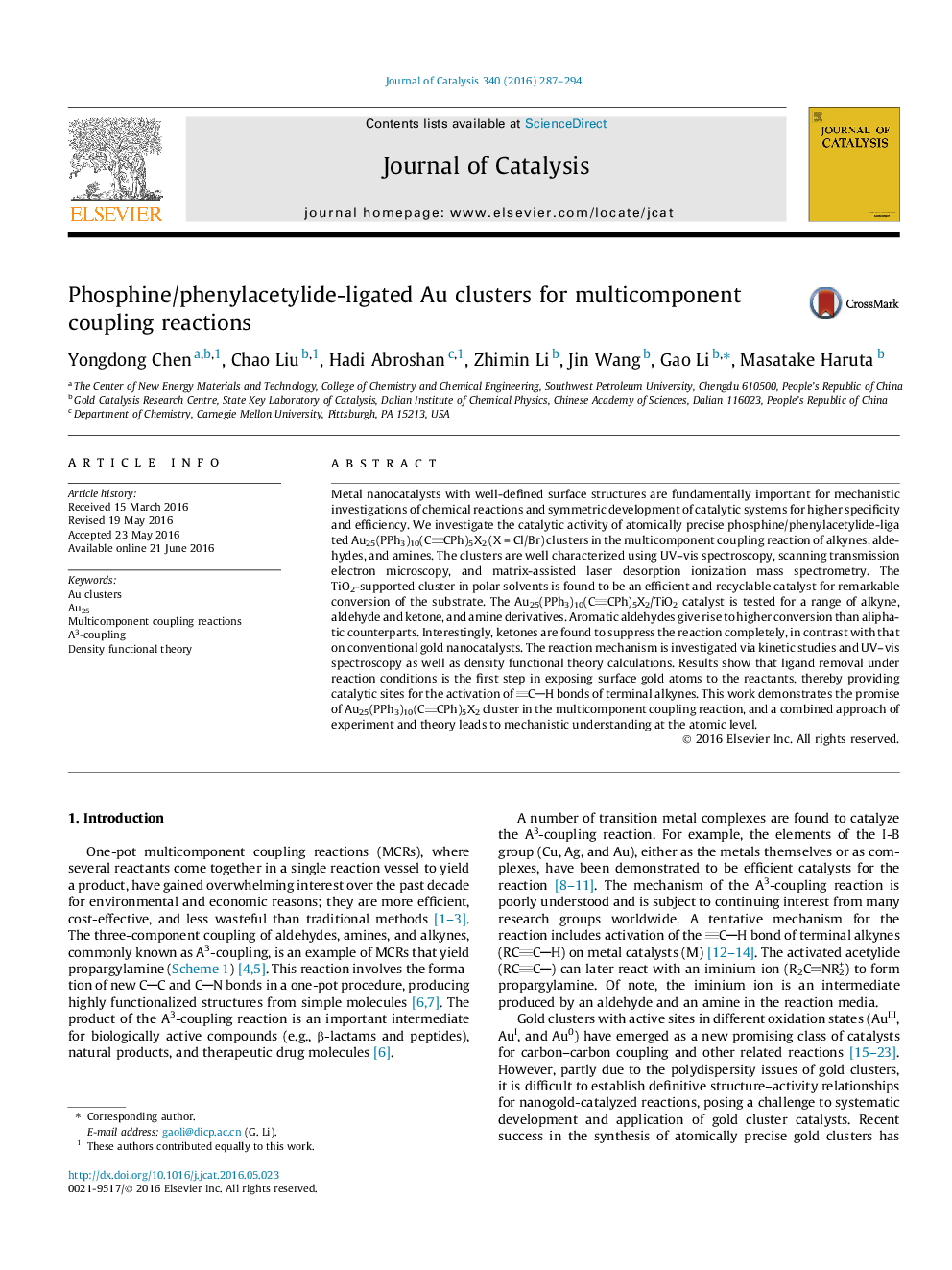| Article ID | Journal | Published Year | Pages | File Type |
|---|---|---|---|---|
| 60530 | Journal of Catalysis | 2016 | 8 Pages |
•The atomically precise Au25 cluster is investigated as a catalyst for the A3-coupling reaction.•Au25/TiO2 in polar solvents is found to be an efficient catalyst for the reaction.•The reaction mechanism is investigated via experiments and DFT calculations.•Ligand removal is the first step in exposing surface gold atoms to the reactants.
Metal nanocatalysts with well-defined surface structures are fundamentally important for mechanistic investigations of chemical reactions and symmetric development of catalytic systems for higher specificity and efficiency. We investigate the catalytic activity of atomically precise phosphine/phenylacetylide-ligated Au25(PPh3)10(CCPh)5X2 (X = Cl/Br) clusters in the multicomponent coupling reaction of alkynes, aldehydes, and amines. The clusters are well characterized using UV–vis spectroscopy, scanning transmission electron microscopy, and matrix-assisted laser desorption ionization mass spectrometry. The TiO2-supported cluster in polar solvents is found to be an efficient and recyclable catalyst for remarkable conversion of the substrate. The Au25(PPh3)10(CCPh)5X2/TiO2 catalyst is tested for a range of alkyne, aldehyde and ketone, and amine derivatives. Aromatic aldehydes give rise to higher conversion than aliphatic counterparts. Interestingly, ketones are found to suppress the reaction completely, in contrast with that on conventional gold nanocatalysts. The reaction mechanism is investigated via kinetic studies and UV–vis spectroscopy as well as density functional theory calculations. Results show that ligand removal under reaction conditions is the first step in exposing surface gold atoms to the reactants, thereby providing catalytic sites for the activation of CH bonds of terminal alkynes. This work demonstrates the promise of Au25(PPh3)10(CCPh)5X2 cluster in the multicomponent coupling reaction, and a combined approach of experiment and theory leads to mechanistic understanding at the atomic level.
Graphical abstractFigure optionsDownload full-size imageDownload high-quality image (57 K)Download as PowerPoint slide
